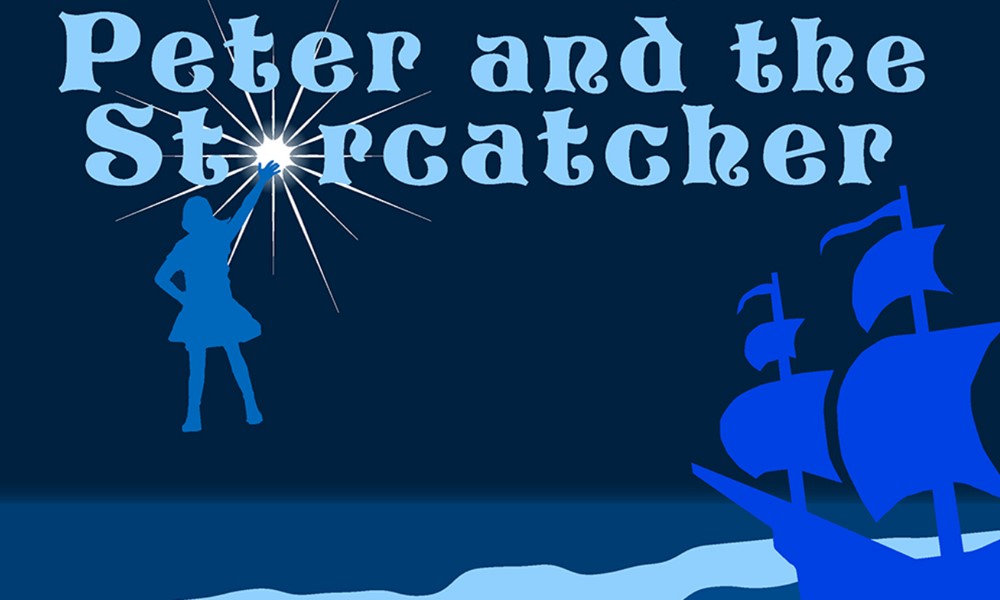Most people are familiar with the story of Peter Pan. The eponymous character takes a young girl, Wendy, out of the mundane world of London, England and shows her the beauty and mystery that is Neverland. In Neverland, no one has to grow up, and can be free to be themselves. What is less known to the general public is exactly where Peter came from. That is the intention of the show “Peter and the Starcatcher” that Stage III put on this spring.
“Peter and the Starcatcher” is an origin story and introduces the audience to Peter when he was an unnamed 13-year-old orphan. It is mostly full of humor and action, with drama and suspense coming in from time to time. The story begins when Peter, along with two of the other boys from the orphanage, Prentiss and Ted, who are sent to work on the ship of the sinister Bill Slank. His ship is named The Neverland, and when we meet Slank, he is undergoing a scheme to steal a chest that is due to be on board the British naval ship The Wasp, being commandeered by Lord Astor. The chest contains the Queen’s precious cargo and is set to be delivered to her. Astor sends his daughter to Slank’s ship, as they are going toward the same destination. He does not know how villainous the man is, and believes it would be more convenient and less dangerous for Molly to stay with her nanny on The Neverland and for them to meet when they arrive at their destination.
Along the way, Molly meets the orphans and despite some reluctance and competition, the four develop a close friendship. She tells them about her father’s mission and tells the boy who will become Peter that she is in training to become a Starcatcher – a person whose mission on earth is to collect “starstuff,” a powerful substance that can easily corrupt people and gives them powers. The group meets Black Stache, a pirate infamous for his black “stache,” capricious attitude, sarcasm, and tendency to fumble words. He is after the starstuff that is in the chest Slank took, and Molly and the orphans have to leave the ship. Before they do, Black Stache attempts to persuade The Boy to become a pirate alongside him, and gives him his name by calling him Peter. When they abandon the ship, Peter is able to float on the chest containing the starstuff, and ends up on a deserted island inhabited by the Mollusks. Prentiss, Ted and Molly soon join him but they are being chased by Black Stache, his crew and Lord Astor. Peter is able to defeat Black Stache with the help of a fish turned mermaid thanks to the starstuff and Black Stache has his right hand cut off by the chest and leaves with his crew. At the end of the play, Peter is told by Lord Astor that he ingested some of the starstuff when he floated on the chest, so he has to stay on the island. He shares a sad goodbye with Molly, and is left with Prentiss, Ted, and a bird Lord Astor enchanted to become a fairy, Tinkerbell, to have fun and stay young.
Of course, in typical Stage III fashion, the play was extremely well-rehearsed, and the actors and technical team did an amazing job. It was great to see familiar faces from the production of “Frankenstein” grace the stage, including senior Claudia Celluci, junior William Curtley, sophomores Connor Rock, Max Adelina, Dominic DiCaprio, and freshmen Liam Antonopoulos and Fiona Hoye. The returners killed it yet again, but newcomers John Ruquet, Sarah Wilson and Nora Collins performed in their first show at Siena and were on par with those who returned. The show was wonderful, funny, and the chemistry between the actors was evident. I never fail to be amazed by the amount of care and commitment that goes into the shows at Siena, and this was no exception: even the lighting and sound production was stupendous!

